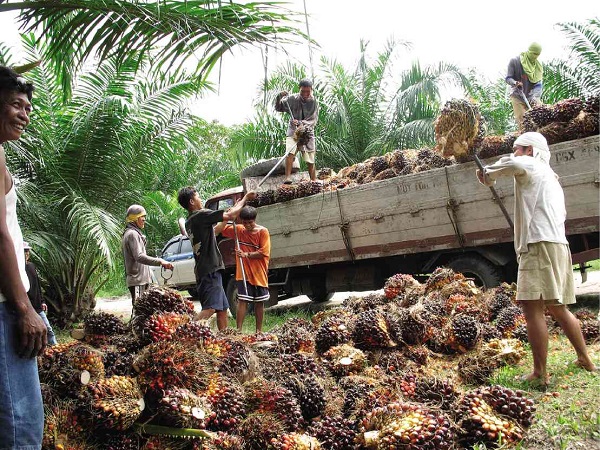177,000 ha of Mindanao land eyed for palm oil
DIGOS CITY—The transformation of Mindanao into a major producer of palm oil in the next two years has started with major oil palm industry players teaming up with the government.
The setup, the Mindanao Development Authority (Minda) said, includes efforts to make Mindanao “a more viable region for oil palm investments.”
Oil palm (Elaeis guinensis) is the “tree” that produces palm oil. It is touted to have the highest content among oil producing plants, including coconut and olive.
In Malaysia and Indonesia, oil palm fields are considered the two country’s cash cows and recent studies showed these might actually contribute to efforts against global warming.
In a statement also furnished the Inquirer, Minda—Malacañang’s development arm in the South—said under the cooperation setup, oil palm industry players would increase the total area planted to oil palm to 177,000 hectares in the next few years.
Article continues after this advertisementCurrently, the total area planted for palm in the country is 54,448 hectares, according to data provided by the Philippine Palm Oil Development Council Inc.
Article continues after this advertisementMinda said the priority areas considered for expansion by oil palm industry players are those in the Autonomous Region in Muslim Mindanao and Caraga region.
Luwalhati Antonino, Minda chair, said government-led business matching sessions between local and global oil palm players are projected to translate into actual investment projects that could propel Mindanao’s emerging palm oil industry.
“Several international players in the oil palm industry are actually very interested in the vast lands that Mindanao has to offer,” she said.
“We just have to continue facilitating the actual implementation of these investments,” she added.
Antonino also announced new developments in the industry, such as the opening of a P600-million oil palm nut crushing facility in Carmen, North Cotabato.
“The mill is estimated to process 30 tons of crude palm oil per hour,” Antonino said, adding that similar facilities needed laborers.
With the development of more areas for oil palm, Antonino said labor demand would also increase, which would translate to income for more families. Kaiza Marie Nawal, Inquirer Mindanao
